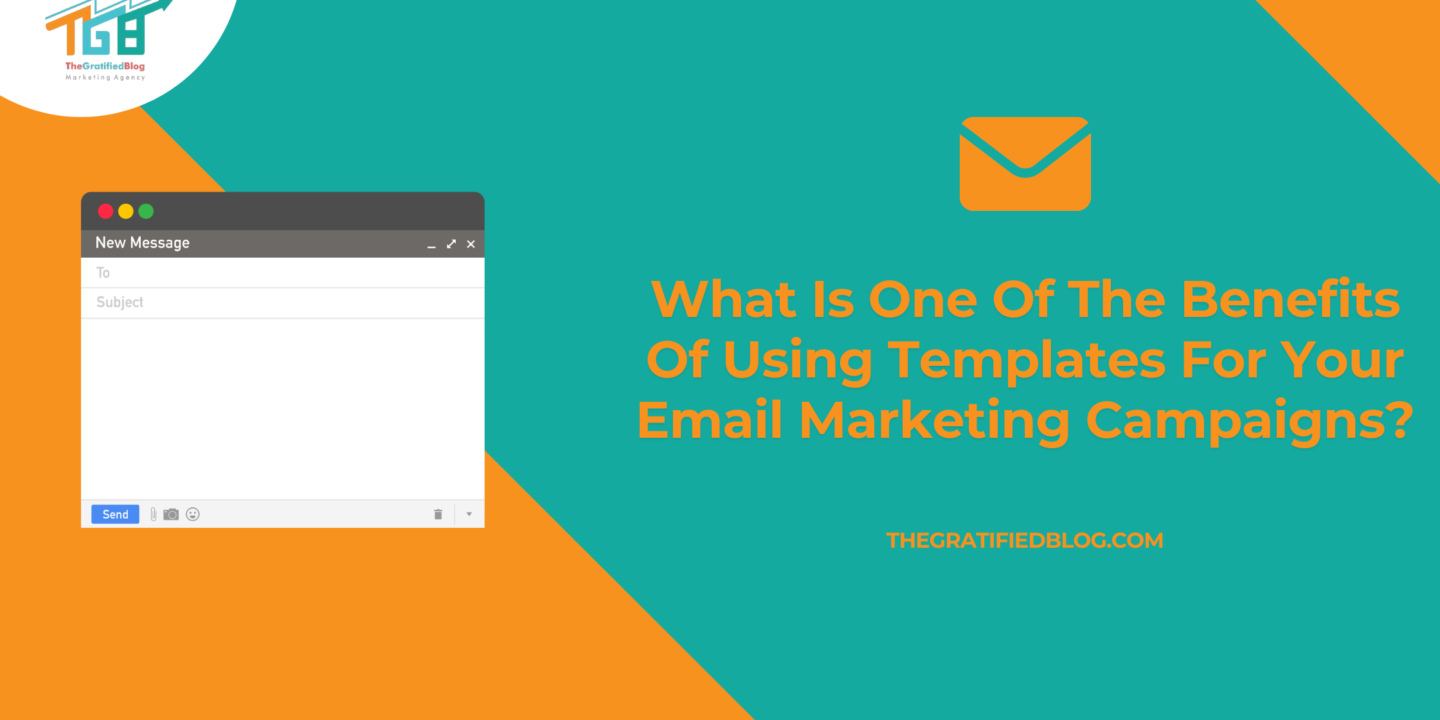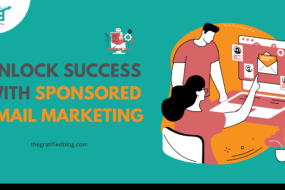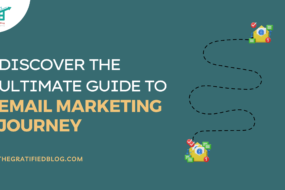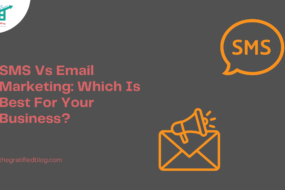
In today’s ever-evolving digital landscape, email marketing remains a powerful resource for businesses to establish connections with their audience. The ability to engage customers, deliver targeted content, and drive conversions through email campaigns is a timeless marketing strategy that has endured over the years. However, a crucial question often arises for effective email marketing: “What is one of the benefits of using templates for your email marketing campaigns?” This question encapsulates an essential aspect of email marketing – the role of templates.
This blog will explore the significance of templates in email marketing. Email marketing templates are not mere design aids; These are potent instruments that have the potential to improve the efficiency and effectiveness of your campaigns in numerous ways.
By the end of this journey, you’ll understand how leveraging templates can be a game-changer for your email marketing strategy, delivering a crucial advantage in a competitive digital landscape.
Let’s delve deeper into the world of email marketing templates and discover the benefits they bring to the table.
But first, let’s answer the question:
What Is One Of The Benefits Of Using Templates For Your Email Marketing Campaigns?
- Reusing the same template
- They come at no cost.
- You can replicate your website’s design.
- Templates excel in mobile compatibility.
Answer: 1. Reusing the same Template
Now that you know the answer, let’s now understand the answer in detail.
What Is An Email Marketing Template?
An email marketing template is a pre-designed, reusable framework that simplifies creating and sending emails to your subscribers.
These templates come with predefined layouts, styles, and placeholders for various elements such as images, text, buttons, and more. They serve as the foundation for your email campaigns, allowing you to maintain consistency in branding, design, and content while saving valuable time and effort.
Email marketing templates are often created with HTML and CSS, ensuring your emails are visually appealing and function well across various email clients and devices. They can be tailored to specific purposes, such as newsletters, promotional emails, and transactional messages.
Now that we understand what email marketing templates are, let’s explore their pivotal role in email marketing campaigns and delve into the various types of email marketing templates available.
The Role Of Templates In Email Marketing Campaigns
Email marketing templates play a pivotal role in the success of email marketing campaigns. Here’s how:
- Consistency: Email templates maintain a consistent visual identity, encompassing your brand’s color schemes, fonts, and logo placement. This uniformity fosters recognition and trust among your email recipients.
- Efficiency: Templates are time-saving structures, sparing you the effort of creating each email from scratch. They reduce the need for extensive coding or design work, streamlining your email creation process.
- Professionalism: By using templates, your emails gain a professional edge. They present a polished appearance, enhancing the overall perception of your brand’s credibility and trustworthiness.
- Mobile Responsiveness: Many email templates are optimized for mobile devices, adapting seamlessly to various screen sizes. This responsiveness is crucial in an age where many emails are opened on mobile devices.
- Content Organization: Templates often have predefined sections for headers, body text, images, and calls to action. These structured layouts simplify the organization of your email content, ensuring maximum impact.
- Personalization: While templates provide a framework, they are flexible for customization. You can personalize the content, images, and calls to action to align with the specific objectives of each email campaign.
Types Of Email Marketing Templates
- Newsletter Templates: Newsletter templates are designed for regular content updates and news distribution. They typically include sections for headlines, articles, images, and links, making them ideal for informing your audience about your latest updates and industry news. Example: A company specializing in tech news uses a newsletter template to share weekly articles about the latest innovations, product releases, and industry trends with its subscribers.
- Promotional Templates: Promotional email templates are perfect for advertising sales, discounts, or specific products or services. They feature compelling visuals and persuasive copy to grab your audience’s attention and drive conversions. Example: An online fashion retailer utilizes a promotional template to announce a “Summer Clearance Sale” with eye-catching images of discounted clothing items and a clear call to action, prompting users to shop.
- Recruiting Template: A recruiting template is the backbone of streamlined talent acquisition. This essential document outlines the entire recruitment process, ensuring consistency and fairness. It guides recruiters in crafting job descriptions, conducting interviews, and finalizing offers, saving time and resources. A well-structured template empowers hiring teams to efficiently source top talent and enhance the overall candidate experience, contributing to the organization’s success.
- Transactional Templates: Email templates are essential for order confirmations, shipping notifications, and password reset requests. They ensure these messages are informative, professional, and consistent with your brand’s look and feel. Example: An e-commerce platform sends a transactional email template to confirm a customer’s purchase, including the order details, expected delivery date, and the company’s logo for brand consistency.
- Event Invitation Templates: Event invitation templates simplify inviting attendees to webinars, seminars, or special events. They typically include sections for event details, RSVP options, and clear calls to action. Example: A nonprofit organization sends an event invitation template for an upcoming charity gala featuring the event date, venue information, and an easy RSVP button for potential attendees.
- Drip Campaign Templates: Drip campaign templates are used for automated, scheduled emails that guide leads through a customer journey. These templates are structured to provide the correct information at the right time, nurturing leads and building relationships. Example: An online course platform employs a drip campaign template to send emails introducing users to its features, providing educational content, and ultimately encouraging them to enroll in a course.
- Feedback and Survey Templates: These templates simplify gathering customer feedback or conducting surveys. They often offer customizable questions and response options to improve products and services. Example: A software company uses a feedback and survey template to collect user opinions on their latest software update, allowing users to rate new features and provide comments for improvement.
- Holiday and Seasonal Templates: These templates help infuse festive elements into your marketing messages for various holidays and seasons. Whether it’s Valentine’s Day, Thanksgiving, or any special occasion, these templates add a thematic touch. Example: A bakery sends out a holiday-themed email template with mouthwatering images of heart-shaped cookies for Valentine’s Day and a special promotion for customers to order sweet treats for their loved ones.
- Responsive and Mobile-Friendly Templates: In the mobile era, these templates automatically adjust their layout to ensure a pleasant viewing experience on desktop and mobile devices. They’re essential for reaching a diverse audience. Example: An online travel agency uses a responsive template to promote vacation deals. Whether viewed on a computer or a smartphone, the email content adapts to different screen sizes, making it easy for users to browse travel destinations and offers.
- Abandoned Cart Templates: For e-commerce businesses, abandoned cart templates aim to recover potentially lost sales by motivating customers to revisit their abandoned shopping carts and complete their purchases. Example: An online bookstore sends an abandoned cart template to customers who left books in their cart, reminding them of the pending purchase and offering a discount to incentivize completion.
- Educational and How-To Templates: These templates are ideal for sharing educational content or providing how-to guides to your audience. They offer structured layouts for presenting valuable information clearly and engagingly. Example: An email marketing agency employs an educational template to send a monthly newsletter featuring tips on email marketing best practices, complete with step-by-step guides on improving open rates and click-through rates.
Using the correct email marketing template for your campaign will streamline the email creation process and ensure your messages are visually appealing, consistent, and highly effective. These templates save time and play a role in the triumph of your email marketing.
Having explored the significant roles of email marketing templates and their various types, let’s delve into how they serve as efficient, time-saving tools in your email marketing campaigns. How Email Marketing Templates Contribute to Time Savings?
The Time-Saving Benefits Of Email Marketing Templates
Point 1: Pre-Designed Layouts For Quick Content Creation
Email marketing templates come with pre-designed layouts, like blueprints for your emails. These layouts are crafted to look great and work well on different devices. They spare you the inconvenience of commencing from the beginning each time you intend to dispatch an email. You can insert your text, images, and links into the designated spots. It’s like having a ready-made canvas for your artwork.
This feature is beneficial when sending emails frequently, like weekly newsletters or regular updates. With pre-designed layouts, you can create content in a snap, making your email marketing process much faster and more efficient.
Point 2: Easy Customization And Personalization
While templates provide a structured framework, they’re not rigid. You can tailor them to align with your brand’s look and feel. You can modify colors, fonts, and other design elements to suit your preferences.
Moreover, you can personalize the content to make each email relevant to your recipients.
This personal touch goes a long way in engaging your audience. You can address your subscribers by name, tailor product recommendations based on their preferences, and send them special offers. Customization and personalization are like giving your emails a personal handshake, which makes your audience feel more connected and valued.
Point 3: Simplified A/B Testing
A/B testing can be likened to a scientific experiment for your emails. It helps you figure out what works best. Email marketing templates often come with built-in A/B testing features, making it super easy to compare different elements of your emails.
For instance, you can test two subject lines to see which gets more people to open your email. You can also try different images, calls to action, or even the time of day you send your emails. Templates automate this testing process, saving time and assisting you in making decisions based on data to enhance your campaigns. It’s like having a reliable lab assistant for your email marketing experiments.
Point 4: Automation And Scheduling Capabilities
Templates often integrate with email marketing platforms that offer automation and scheduling features. This means you can set up your emails in advance and have them automatically sent at specific times or triggered by certain actions. For example, if a subscriber joins your list, You can establish an automated introductory email to be shipped immediately.
If you have a series of emails for a drip campaign, you can schedule them to go out at precise intervals. Automation ensures your emails reach the right people at the right time, even when you’re not manually hitting the send button. It’s like having a reliable assistant who works around the clock to ensure your emails are timely and relevant.
Point 5: Quick Adjustments For Responsive Design
Today, people open emails on various devices, from smartphones to desktop computers. Responsive design ensures your emails look good and are easy to read, regardless of the device. Templates often come with responsive design built in. This means your email layout adjusts automatically to fit the screen size, so subscribers get a great experience no matter how they access your email.
With responsive templates, you don’t have to be a coding expert to ensure your emails look fantastic on all devices. It’s like having a magical resizing tool that does the work for you, saving time and ensuring your emails reach everyone in top-notch form.
Point 6: Built-In Analytics For Better Decision-Making
Email marketing templates often include analytics tools that track your emails’ performance. These analytics provide valuable data on open rates, click-through rates, and more. They also give insights into what content resonates with your audience and what needs improvement.
This data helps you make informed decisions about your email marketing strategy. For instance, if you see that a particular subject line or call to action is getting a lot of clicks, you can use that knowledge to optimize future emails. It’s like having a built-in report card for your emails, guiding you to make smarter choices and attain improved outcomes in your marketing endeavors.
Indeed, now that we’ve explored how templates can save time in your email marketing campaigns, let’s focus on the platforms that provide these email marketing templates.
Famous Email Marketing Template Platforms
Mailchimp
Mailchimp boasts a user-friendly template editor and extensive template selection for your campaigns. It also offers functionalities such as A/B testing and in-depth analytics.
SendinBlue
SendinBlue’s platform stands out with a drag-and-drop email editor, responsive templates, automation capabilities, and a strong track record for email deliverability.
HubSpot
HubSpot’s suite of email marketing tools includes a library of templates, A/B testing functionality, and advanced analytics to assist you in crafting and optimizing your email campaigns.
FAQs
Q1. Why should I use email marketing templates?
A. Email marketing templates offer several benefits, including maintaining consistency in branding, saving time and resources, and ensuring responsive design for various devices. They make it easier to create engaging and effective email campaigns.
Q2. How do I customize an email marketing template?
A. Most email marketing platforms provide user-friendly template editors that allow you to customize templates with your brand’s colors, logos, and content. You can typically edit text, images, and links to tailor the template to your campaign needs.
Q3. Can I reuse email marketing templates for different campaigns?
A. one of the significant advantages of email marketing templates is that you can reuse them for various campaigns. Reusing templates ensures consistency in your branding and messaging while saving time.
Conclusion
Now that you understand one benefit of using templates in your email marketing campaigns consider implementing this knowledge into your email marketing strategy today. Explore how this benefit can positively impact your email marketing efforts.
If you still have any questions related to the blog, then feel free to leave your questions in the comments section. We are pleased to address any inquiries you may have.
Thanks for reading 🙂








No Comments